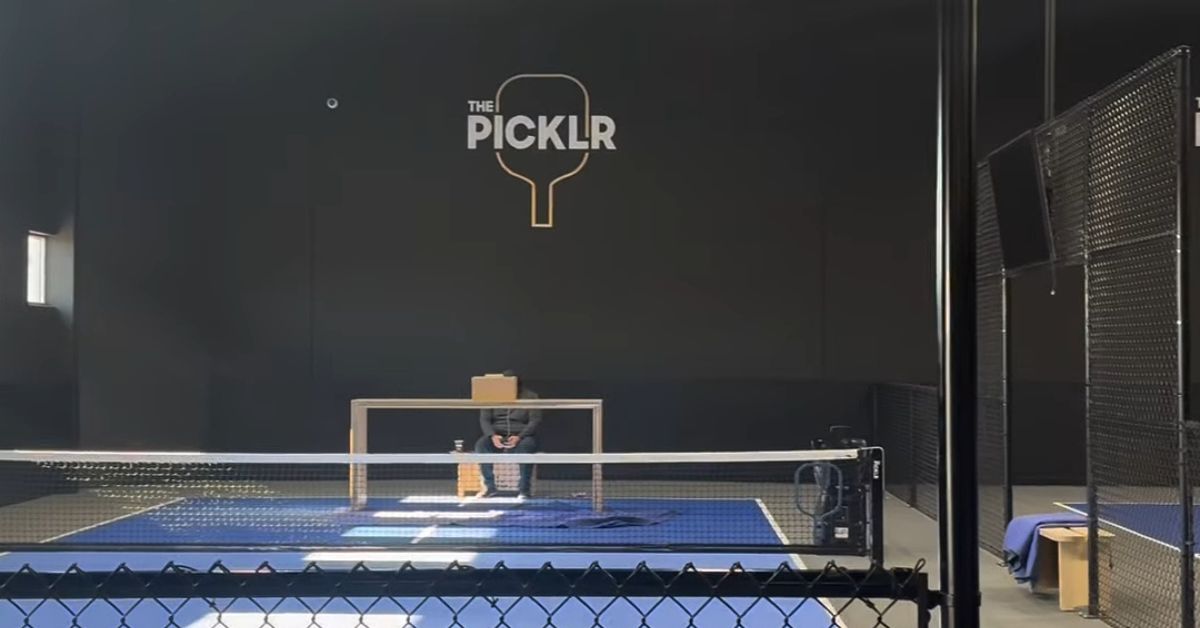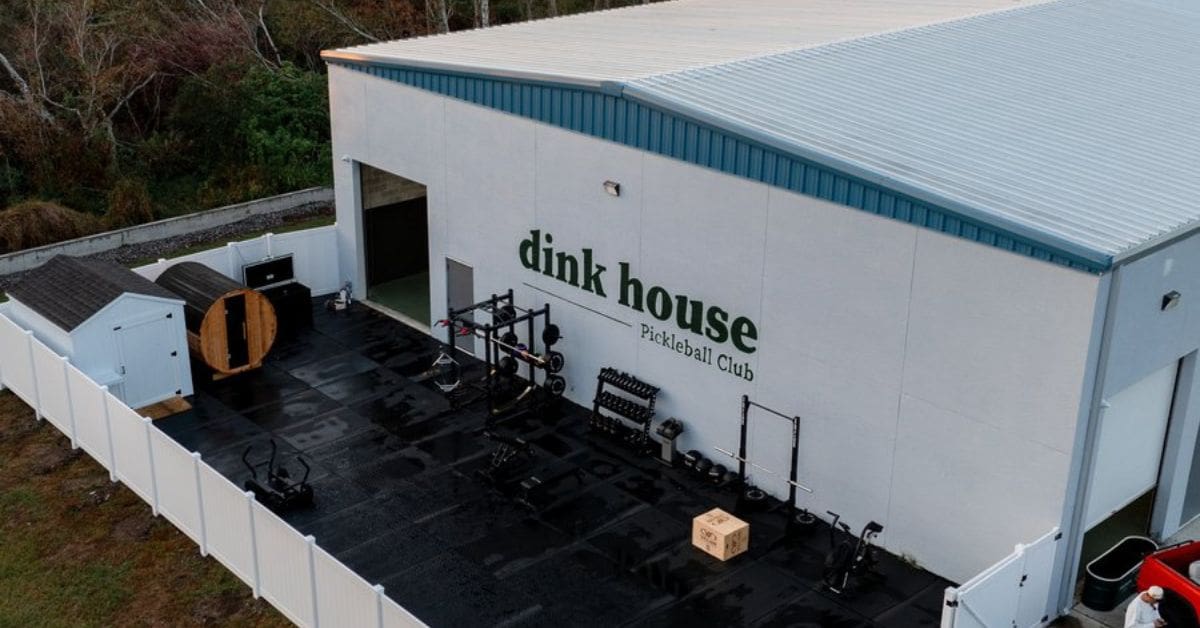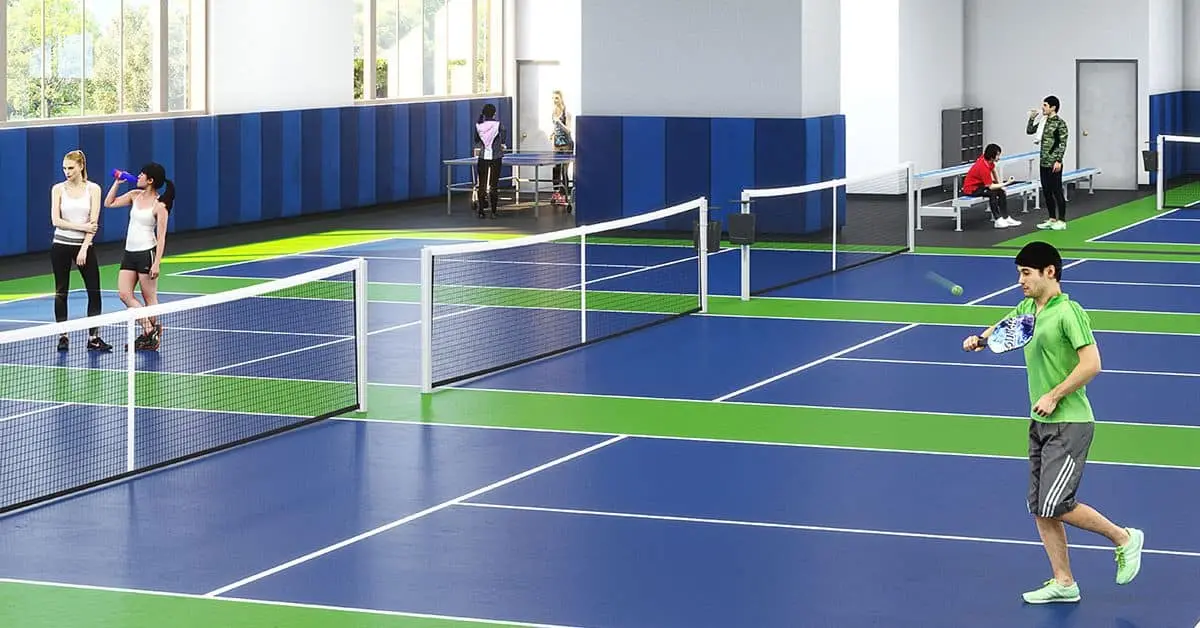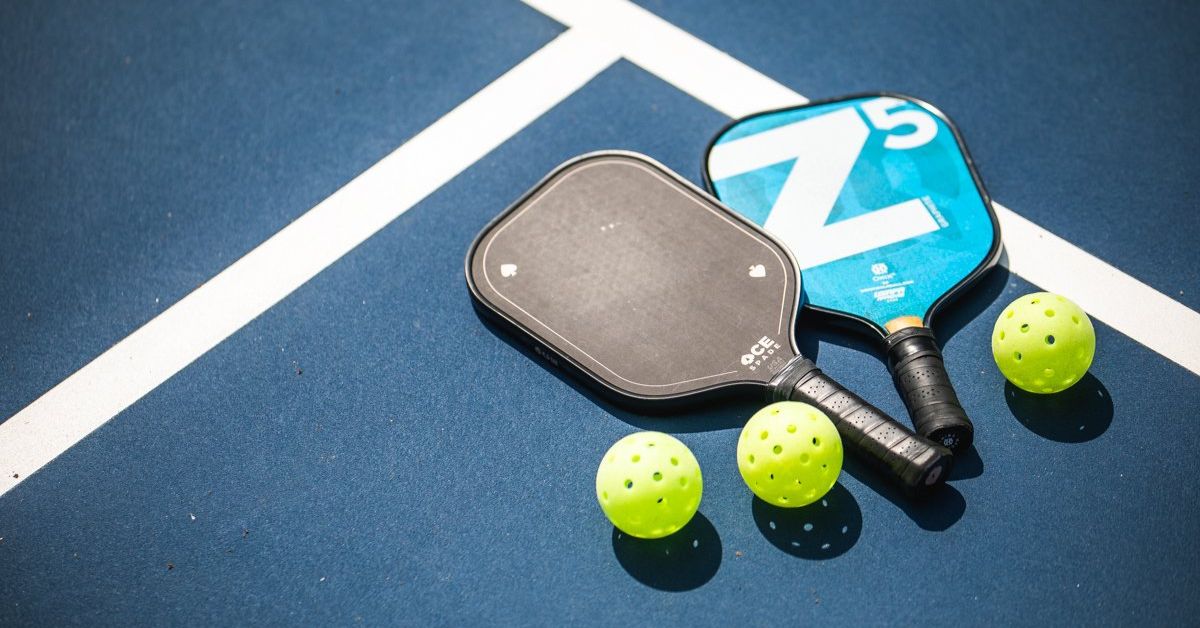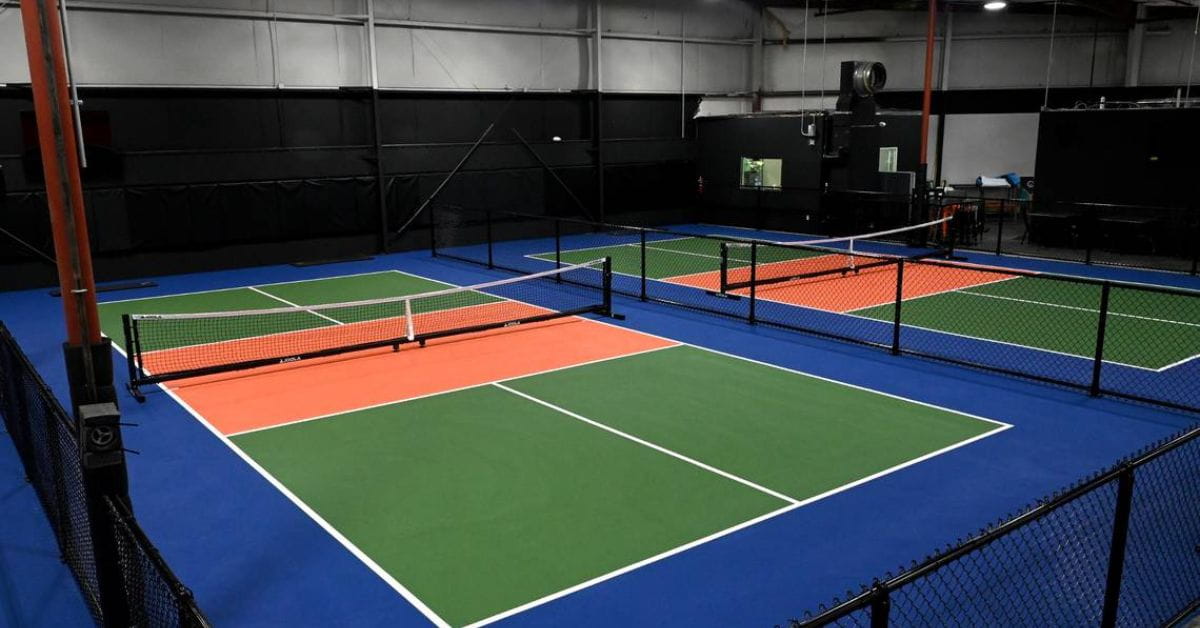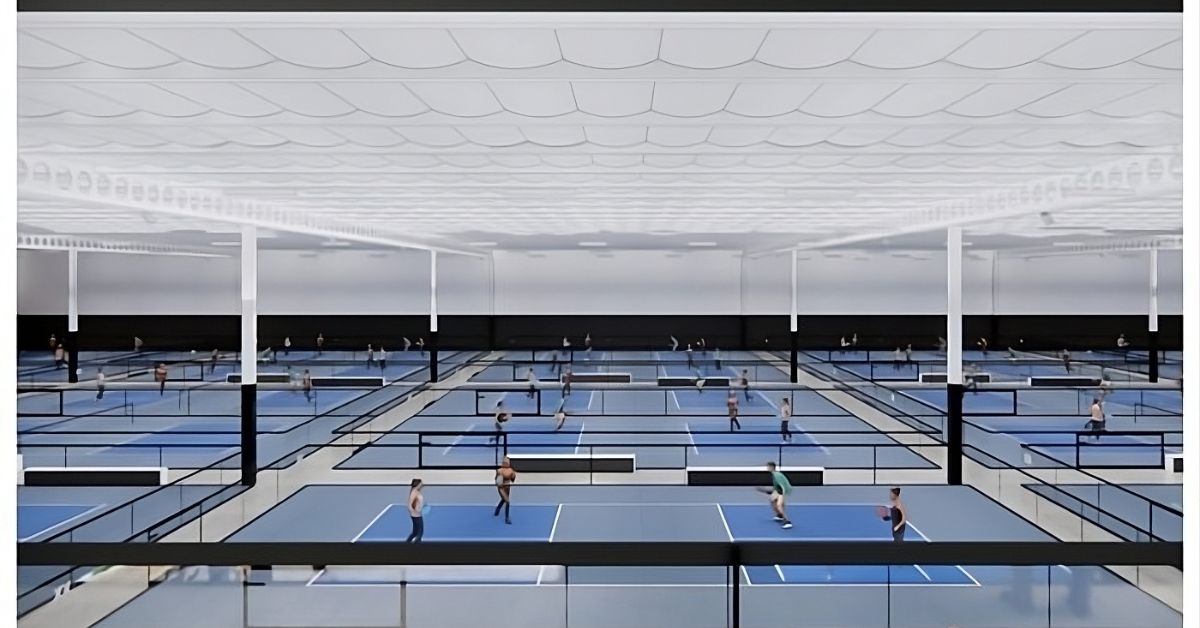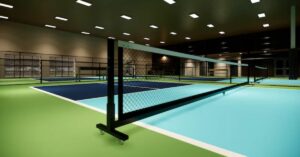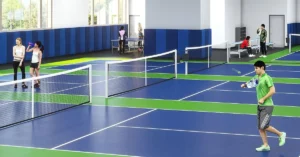Like all things popular, pickleball has its lovers and haters. On the one hand, it has been the fastest-growing sport in America in the past few years. Conversely, people turn their noses up at its somewhat goofy name and are hesitant to place it alongside more traditional racquet sports like badminton and tennis.
Despite the polarization in how it is received, there is no denying that pickleball is here to stay. The sport is growing, drawing support from a diverse community spanning various age groups and athletic backgrounds.
Pickleball has been incorporated into many gym programs across schools and colleges since its inception while also being included in the National Senior Games Association (NSGA) since 2008. It’s rare for a game to have such an impact on people of all ages and skill levels, especially for a sport as young as pickleball.
This begs the question of pickleball’s beginnings. As a game invented in the 1960s, it sure has seen a splurge in popularity and number of players, so much so that some experts predict it might surpass tennis in the next decade.
This blog will delve into the question: why is pickleball called pickleball? We will discuss the sport’s origins, growth, rules, and the reason behind its widespread appeal among the country’s population.
The Origins of Pickleball
Pickleball originated in Bainbridge Island, Washington, in the year 1965. It was invented by Joel Pritchard, a congressman, and his friend Bill Bell, a businessman. They decided to play an impromptu game to entertain their families one day when they returned from a game of golf and found the kids bored. With limited equipment, they improvised using ping pong paddles and a plastic ball. Their goal was to have a fun activity the whole family could enjoy.

When Was Pickleball Invented?
Pickleball was invented in 1965 when Pritchard and Bell searched for a way to keep their families entertained during the summer. After a round of golf, they returned to Pritchard’s home on Bainbridge Island, connected to Seattle by a ferry. Pritchard had a badminton court in his home but not enough racquets, so they improvised, using ping pong paddles and a plastic ball.
Initially, they set up the net at the height of a badminton net but soon realized the plastic ball bounced well on the court’s surface and lowered it to 36 inches.
The following weekend, they brought in another neighbor, Barney McCallum, who contributed to the formation of the rules. Inspired by badminton, they crafted regulations to make the game accessible and enjoyable for everyone, particularly their families. McCallum’s involvement marked a significant step in solidifying the game’s structure as he also came up with the first pickleball paddles.
By 1967, the enthusiasm for their invention led Pritchard to construct the first permanent pickleball court in his neighbor’s backyard, Bob O’Brian. Establishing a dedicated court marked the transition of pickleball from a mere backyard pastime to a more recreational severe activity.
Over the years, pickleball continued to evolve, with standardized rules and equipment established. What began as a simple solution for summer boredom grew into a global phenomenon, with millions of enthusiasts enjoying the game worldwide.
The story of pickleball’s beginnings showcases the power of creativity and improvisation in creating something enduring and beloved by many.
Why Is It Called Pickleball?
Pickleball is a strange name for a sport. However, the story behind how it got its name is fascinating. Everyone knows the game was made exceptionally, but its name is even more peculiar. Interestingly, there are two main stories behind the origin of the name, each adding a unique twist to the sport’s history.
One account suggests the game was named after Joel Pritchard’s dog, Pickles. According to this version, Pickles, a playful Cockapoo puppy, would often chase after the ball during the early days of the game’s development. The sight of Pickles darting around the court led them to name their newfound sport after the energetic pup affectionately.
Some people, including the Pritchards, argue the dog only came into the family two years after they started playing pickleball and was named after the sport.
The second account proposes that Pritchard’s wife, Joan, who had a background in competitive rowing, likened the game to a “pickle boat” in crew terminology. A pickle boat is a crew boat comprising leftover rowers from other ships. It is believed that Joan’s association of the game with this rowing term led to the adoption of the name “pickleball.”
Both accounts are accepted in the community, and regardless of which version you choose to believe, the name “pickleball” has become synonymous with a sport known for its accessibility, camaraderie, and fun-loving spirit, captivating players of all ages and backgrounds worldwide.
The Pickleball Court
Since pickleball is a sport inspired by other racquet sports, its court also takes inspiration from their courts. A standard pickleball court measures 44 feet in length and 20 feet in width. This is roughly the size of a badminton court since Pritchard and Bell used an old badminton court for their initial games. Similarly, the net height was lowered to 36 inches, inspired by the tennis court. It’s also said that the net height was fixed at 36 inches because Pritchard calibrated the net to his waist.
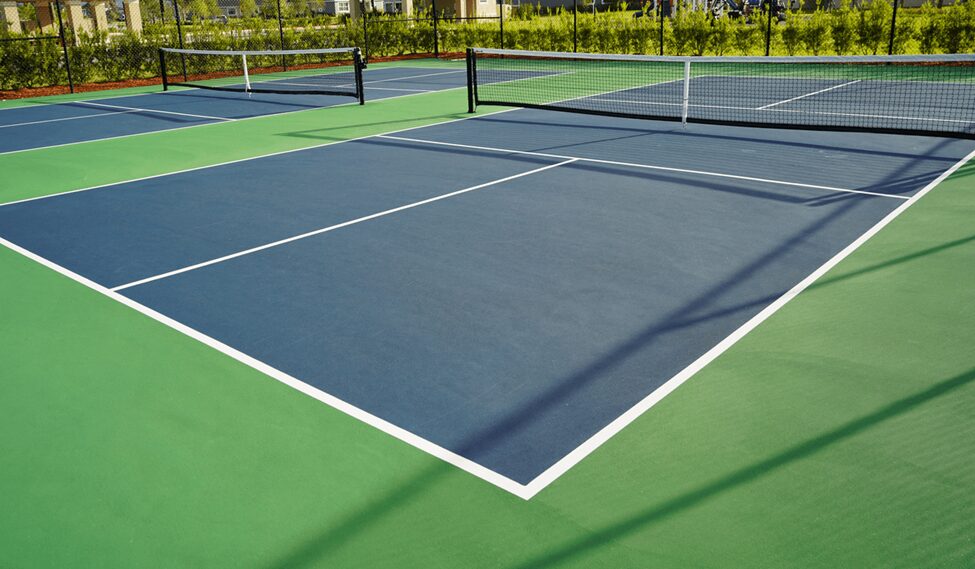
Why Is It Called the Kitchen in Pickleball?
The name of the non-volley zone on the court is also a fascinating part of pickleball lore. The pickleball kitchen is a 7-foot area extending on both sides of the net (14 feet) in which volley shots are prohibited. Volleying the ball means hitting it back before it bounces. The kitchen is also called the non-volley zone because volleying there is illegal.
There are two theories to answer why it is called the kitchen in pickleball. The first theory suggests that the inventors of the sport found it apt to name the zone after a household term, given the recreational nature of the then-family sport.
Another theory links it to shuffleboard, where a similar area exists with penalty implications. In this game, the “10-off” zone, also called the kitchen, incurs point deductions if a disc lands within it.
Whether inspired by household humor or borrowing from another sport, the kitchen in pickleball adds a layer of complexity to the game since volleying in the kitchen is one of the most common faults players make during matches.
How Is Pickleball Played?
Pickleball is played on a court and follows a scoring system similar to paddle games. We break down the basic rules of the game below:
Serving
Serving in pickleball starts a rally, and only the serving team can score during a serve. A serve must be an underhand shot hit below the waist that should land in the opponent’s diagonal serving court. Each side’s first serve starts from the serving team’s right serving court. In this case, the serve must be received in the opponent’s right serving court, diagonally opposite the server’s serving court. After the first serve, the team alternates between left and right serving courts.
Additionally, serving sequences differ between singles and doubles. In singles with a single player per team, the player gives up their serving turn to the opponent after they commit a single fault. In the case of doubles, the serving team committing their first fault results in the serving turn passing to the team’s second player.
Scoring
Scoring in pickleball, whether in singles or doubles, follows a straightforward system. To conclude a match, players aim to reach 11 points, with a crucial requirement of winning by a margin of 2 or more points. While some games extend to 15 or 21 points, the standard format remains at 11 points for most matches.
In singles, scoring displays two numbers, 0-0, denoting the serving player’s score followed by the opponent’s score. Doubles, however, employ three numbers, 0-0-1, representing the serving team’s score, the receiving team’s score, and the server’s position in the serving rotation.
Faults during play, such as serving into the net or out of bounds, result in a loss of serve or a change in the serving team. Players must remain vigilant to avoid faults and capitalize on scoring opportunities to secure victory in this fast-paced and competitive sport.
Singles and Doubles
Pickleball singles and doubles exhibit distinct gameplay dynamics. In singles, each player covers the entire court individually, emphasizing agility and one-on-one strategy. The court dimensions remain the same, but the gameplay is more intense, requiring quick lateral movements and precise shot placements.
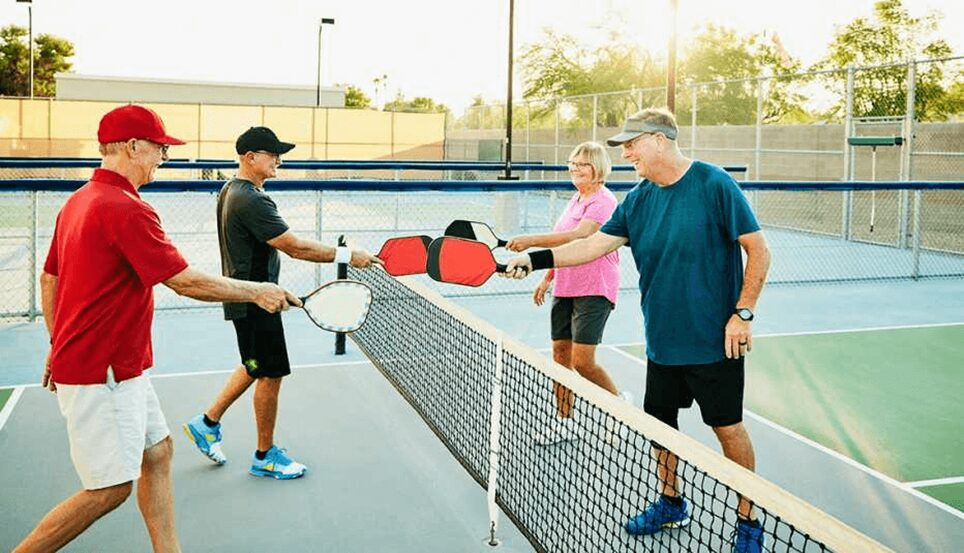
On the other hand, pickleball doubles involve teams of two players on each side, with a shared responsibility for the court. Communication and teamwork become crucial as players coordinate to cover ground efficiently. The dynamics of shot selection and court coverage change, introducing a collaborative element that distinguishes doubles play from the more solitary nature of singles.
Frequently Asked Questions
Also known as the ‘non-volley zone,’ the kitchen is a designated area seven feet from the net on both sides of the court. It’s critical to the game’s dynamics as its primary purpose is to keep players from executing volleys while standing within this restricted zone.
Why is it called the kitchen in pickleball? There are two theories: one is that the game’s inventors were family men who chose a household name, and the other is that it takes the name from the shuffleboard’s no-go zone.
Competing in professional pickleball championships requires skill, experience, and willingness to grow from setbacks and mistakes.
The way to start is by honing your skills. Learn to make effective serves, precise shots, and accurate volleys. Regular practice is key to improving.
Participation in local and regional tournaments provides valuable experience and exposure. Success in these events can lead to higher-level competitions and build a player’s competitive resume. Networking with other players and professionals within the pickleball community is essential for staying informed about upcoming championships and opportunities.
Players must often obtain a professional rating to compete at a professional level. Organizations such as the Professional Pickleball Association (PPA) or the USA Pickleball Association (USAPA) may offer avenues for achieving and maintaining professional status.
The origins of the sport trace back to Pritchard’s desire to create a game suitable for his family, combining elements of badminton, tennis, and ping-pong. They set up a makeshift court in Pritchard’s backyard on Bainbridge Island, Washington, using a perforated plastic ball, paddles, and a low net.
As for the name, the origins of “pickleball” have two famous anecdotes. One suggests that it was named after the Pritchard family’s dog, Pickles, who supposedly chased after stray balls during the game. The other narrative attributes the name to “pickle boats” in rowing, boats that typically fill leftover oarsmen. Since the game incorporated elements from various sports, it was humorously deemed the “pickle boat” of racquet sports.

Municipal sports complexes and community centers are often equipped with pickleball courts, and some schools or universities may also offer access to their facilities. Online platforms and mobile apps dedicated to sports facilities and recreational activities, such as the USA Pickleball Places2Play website, can be a valuable resource. These platforms provide information
Pickleball has a straightforward start-up pack. First and foremost, you’ll need a pickleball paddle, which comes in various materials and styles. You can buy paddles from good sports shops, online retailers, or specialized pickleball equipment providers. Just remember that a good paddle will accentuate your playing style and skills.
Next, you’ll need pickleballs, perforated plastic balls specifically designed for the sport. Pickleballs are available in different colors, and many beginner sets come with a set of balls. Comfortable athletic shoes with non-marking soles are crucial for maneuvering on the court.
The social nature of pickleball plays a significant role in its popularity. The sport encourages camaraderie and inclusivity, fostering community among players. Many enthusiasts appreciate the social aspects of the game, whether playing casually with friends or engaging in organized leagues and tournaments.
Pickleball’s adaptability contributes to its success. It can be played indoors and outdoors, allowing year-round participation in various settings. Additionally, the sport’s blending of elements from tennis, badminton, and ping-pong adds a unique and enjoyable dimension to the playing experience.
Pickleball’s strategic and dynamic nature also attracts players seeking a balance between competitiveness and recreation. The sport’s emphasis on skill, precision, and teamwork provides participants with a satisfying and engaging experience.
Moreover, the sport has gained visibility through organized events, promotional efforts, and the development of dedicated pickleball facilities. These factors and the game’s overall fun and inclusive atmosphere have contributed to pickleball’s remarkable popularity across the United States.
The Humble Pickleball Beginnings and Subsequent Popularity
In conclusion, delving into the roots of pickleball’s name uncovers the humble beginnings of this now wildly popular sport. Conceived in the 1960s as a family-friendly backyard game, its amusing moniker has sparked curiosity and speculation.
Whether named after a family dog or a whimsical nautical term, pickleball’s origins reflect its spontaneous and inclusive nature. From a makeshift court on Bainbridge Island to becoming the fastest-growing sport in America, pickleball’s journey exemplifies the fusion of fun and competition.
The sport’s widespread popularity lies not only in its quirky name but also in its accessibility, social appeal, and dynamic gameplay. The evolution from a casual pastime to a national sensation underscores the enduring charm of pickleball and its ability to captivate enthusiasts across diverse age groups and backgrounds.


